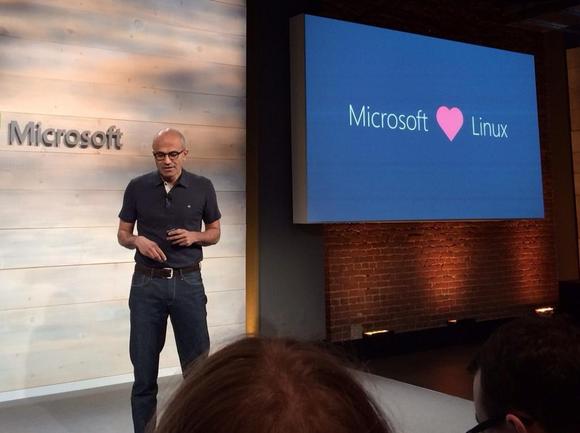Historically Microsoft has been one of the most closed secretive companies when it comes to source code and other trade secrets. The motive behind this is to prevent Microsoft’s competitors from gaining an advantage in the market. This closed-source policy has created a captive market for Microsoft products, including vendor lock-in and golden handcuffs.
But as technology has changed and open-source Linux has grown to a viable competitor thanks the the diligent efforts of altruistic programmers and companies that sponsor development, Linux has begun to take a large enough share of Microsoft’s market.
Linux has been deployed on hundreds of thousands of servers and runs 80% of internet sites. It’s free cost, ease of access, complete documentation, and large network of professionals has made Linux the #1 operating system for websites, research, and technically savvy home users wanting a free operating system and nearly all free software.
As desktop Linux has grown in popularity among hobbyist home users and has started taking a foothold in the home desktop market Microsoft has taken notice. In fact, Microsoft has begun making applications available for Linux that 5 years ago would seem impossible.
After years of fighting against Linux Microsoft has come to embrace Linux and open source and has made that public by joining the Linux Foundation, “the organization of choice for the world’s top developers and companies to build ecosystems that accelerate open technology development and commercial adoption.”
The Linux foundation supports the development of the Linux kernel and funds open source development. The Linux foundation also provides an organization for companies, developers, Linux professionals, and individuals to come together to share ideas about promoting Linux and open source software.
By joining the Linux Foundation, Microsoft is changing its stance from fierce opposition to Linux and open source to supporting a platform and operating system to run its software. This will bring improvements to Linux and also help Microsoft maintain a foothold in the market for its server products.
Microsoft has announced that it has ported a beta version of its popular and powerful flagship product, Microsoft SQL server, to the Linux operating system. This public beta is free to download and try https://www.microsoft.com/en-us/sql-server/sql-server-vnext-including-Linux.
Microsoft has also announced its plans to bring its cloud application service, Azure, to Linux making its apps available to Linux users.
The changes are an ongoing effort by the Microsoft to adapt to the changing market and support Linux and open source in different ways that will benefit the consumer and users. Microsoft CEO Satya Nadella first said in 2014 that “Microsoft loves Linux.”

Microsoft is joining the Linux Foundation as a Platinum member. It will join the company of other heavy hitter companies like Intel, Oracle, Samsung and IBM. The change in direction makes sense for Microsoft, given its open-source leanings of late. Jim Zemlin, the Foundation’s executive director, said that he expects Microsoft will intensify “its involvement and commitment to open development.”
We can see how Microsoft has adopted elements of Linux into its operating system by including a bash interpreter in Windows 10, and by making its flagship software product SQL Server run on Linux. While there has a been a long history of Microsoft fighting Linux and open source software, this change refelects the changing market forces that are forcing Microsoft to adapt. Microsoft says we are working on creating a space “where developers can come and work on making Linux more effectively interoperate with Microsoft products.”
This will ultimately benefit consumers as they may have the choice then of using Microsoft on the desktop, or saving some money by using Linux on the desktop with the full assortment of free software in addition to Microsoft’s commercial pay to play software. In this regard it could be a win win for consumers and Microsoft.
